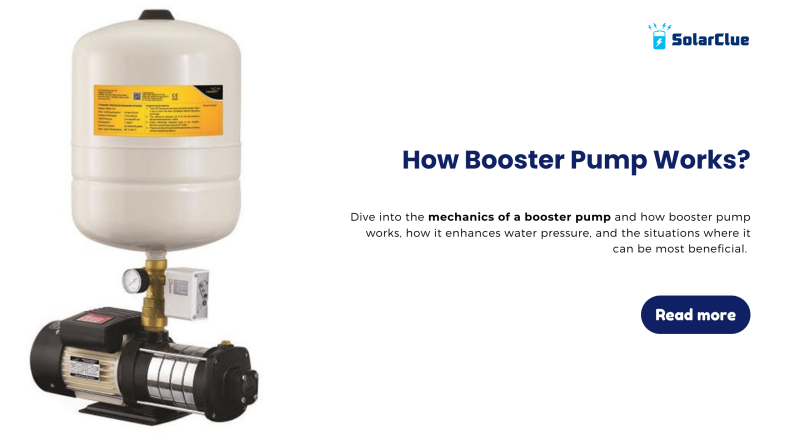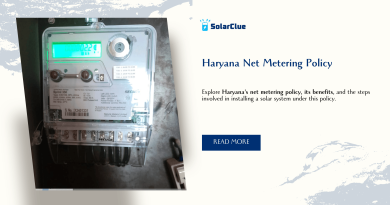How Booster Pump Works?
When you’re dealing with low water pressure at home, in a commercial building, or for industrial use, a booster pump is often the solution you need. But how exactly does this device work to increase water pressure? In this blog, we’ll dive into the mechanics of a booster pump and how booster pump works, how it enhances water pressure, and the situations where it can be most beneficial.
Table of Contents
- 1 What is a Booster Pump and How Does a Booster Pump Work?
- 1.1 1. Water Intake
- 1.2 2. Impeller Action
- 1.3 3. Pressure Boost
- 1.4 4. Water Outlet
- 1.5 5. Pressure Control
- 1.6 Types of Booster Pumps and Their Operation
- 1.7 1. Single-Stage Booster Pumps
- 1.8 2. Multi-Stage Booster Pumps
- 1.9 3. Variable Speed Pumps
- 1.10 Key Components of a Booster Pump
- 1.11 Applications of Booster Pumps
- 1.12 Benefits of Using a Booster Pump
- 1.13 When Should You Install a Booster Pump?
- 1.14 Conclusion
What is a Booster Pump and How Does a Booster Pump Work?
A booster pump is a device used to increase the pressure of fluids (usually water) in a system. It’s a simple yet powerful tool designed to enhance water flow by boosting its pressure, making it perfect for residential, commercial, or industrial applications.
The main purpose of a booster pump is to increase water pressure so that water flows more forcefully through pipes, taps, and appliances. Here’s a step-by-step explanation of how the process works:
1. Water Intake
The first step in understanding how booster pump works is how it is connected to a water source, typically a well, storage tank, or a municipal supply line. Water is drawn into the pump through an intake pipe, which leads to the main chamber where the pressure increase will occur.
2. Impeller Action
At the core of most booster pumps is a rotating impeller (a fan-like device). As the pump motor spins the impeller, it generates centrifugal force, which pushes the water outward towards the edges of the chamber.
3. Pressure Boost
As water moves outward due to the centrifugal force, the pressure increases. The booster pump’s impeller creates a flow of water that is forced into a smaller space, effectively boosting its pressure as it moves through the pump.
4. Water Outlet
Once the water pressure is increased, the high-pressure water is pushed out through the discharge outlet, where it is then delivered to the plumbing system. This increased pressure results in stronger water flow at your faucets, showers, or any point of use.
5. Pressure Control
Last but not least to gain complete understanding on how booster pump works is as it have built-in pressure sensors or controls that automatically adjust the pump’s speed based on the demand for water. For instance, if multiple taps or showers are in use, the pump increases its output to maintain the pressure. Once the demand decreases, the pump slows down or shuts off to conserve energy.
Types of Booster Pumps and Their Operation
Booster pumps come in various types, each with slightly different operational mechanisms:
1. Single-Stage Booster Pumps
These pumps have only one impeller and are commonly used for smaller applications, like residential homes.
How It Works: Water enters the pump, passes through the impeller, and exits at a higher pressure. The single-stage mechanism is straightforward and suitable for modest pressure increases.
2. Multi-Stage Booster Pumps
Multi-stage booster pumps contain multiple impellers (stages) within the same pump, allowing them to generate much higher pressure.
How It Works: Water moves through several stages of impellers, each increasing the pressure incrementally until the desired pressure level is reached. These pumps are ideal for high-rise buildings, commercial facilities, or industrial applications.
3. Variable Speed Pumps
These pumps adjust their speed based on the water demand.
How It Works: When demand for water increases (for example, multiple taps are turned on), the pump speeds up, boosting pressure to match the demand. Once the demand decreases, the pump slows down to maintain efficiency, consuming less power.
Key Components of a Booster Pump
A booster pump consists of several vital components that allow it to function efficiently:
1. Motor: Powers the impeller to rotate and create the centrifugal force necessary for boosting water pressure.
2. Impeller: A rotating device that moves water through the pump by converting rotational energy into increased water flow and pressure.
3. Pressure Sensors/Controller: Regulates the pump’s operation based on the demand for water. Some advanced systems allow for automatic on/off functionality.
4. Inlet and Outlet Ports: Allow water to enter the pump at low pressure and exit at high pressure.
5. Check Valve: Prevents water from flowing back into the system, ensuring consistent pressure output.
Applications of Booster Pumps
Booster pumps are versatile and can be used in a variety of settings:
1. Residential Use: In homes, booster pumps are commonly installed to increase water pressure in showers, taps, or irrigation systems.
2. Commercial Buildings: Large buildings often experience pressure drops on higher floors. Booster pumps ensure consistent pressure across all floors.
3. Industrial Applications: Factories, manufacturing plants, and other industries use booster pumps to maintain consistent water pressure for processes requiring high water flow rates.
Benefits of Using a Booster Pump
1. Enhanced Water Pressure: The primary benefit of a booster pump is its ability to increase water pressure, providing a more powerful flow.
2. Efficient Water Delivery: Booster pumps ensure consistent water flow even during peak usage times, making them indispensable in homes, commercial spaces, and industrial environments.
3. Energy Efficiency: Modern booster pumps with variable speed technology optimize energy consumption, reducing power usage when full pressure isn’t required.
4. Customizable Settings: Many booster pumps come with pressure settings, allowing you to adjust the water flow based on your specific needs.
When Should You Install a Booster Pump?
If you are experiencing any of the following issues, a booster pump might be the right solution:
1. Low water pressure: Inadequate pressure in taps, showers, or sprinklers.
2. Multi-story buildings: Water pressure drops on higher floors due to gravity and pipe resistance.
3. Irrigation systems: Insufficient pressure to efficiently water large gardens or agricultural fields.
4. Long-distance water supply: When water needs to travel a long distance from its source to the point of use.
Conclusion
I hope you got a complete understanding on how booster pump works as it is a valuable tool for improving water pressure and ensuring consistent water flow in a wide range of applications. From homes with weak water pressure to large industrial operations, booster pumps work by using impellers to increase the pressure and ensure efficient water delivery.
Whether you need to upgrade the water pressure in your home or improve operational efficiency in a commercial or industrial setting, a booster pump could be the perfect solution. Ensure you choose the right type and size for your specific needs, and consider seeking expert guidance for installation and maintenance.
Need help choosing the right booster pump? Contact SolarClue today for personalized guidance and top-quality products tailored to your specific water pressure needs. We offer a wide range of premium brands to ensure you get the best results and long-term performance from your booster pump.




